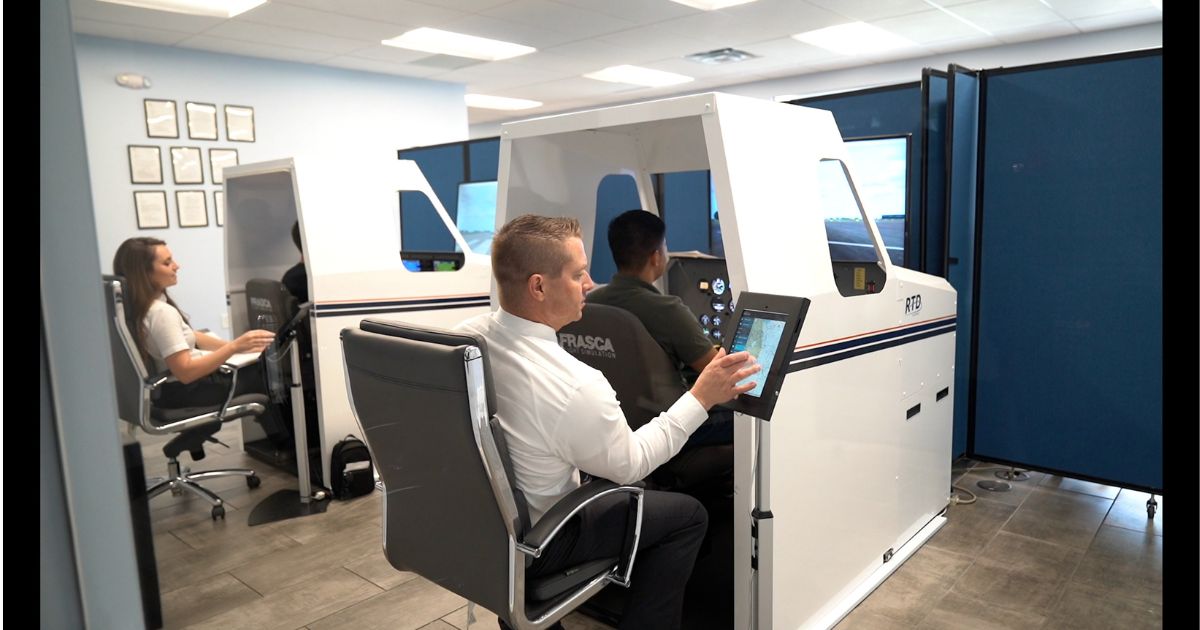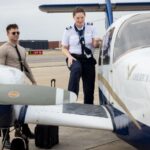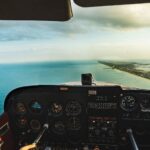Here is a brief timeline of some facts that very few people know about the early days of the flight training industry in the United States:
- The Wright Brothers’ first flight was on December 17, 1903. Not only were they the first to fly an airplane, but they also had to figure it out as they went. They didn’t have anyone to teach them.
- On March 2, 1933, a regulatory amendment announced the solo flying time required for a private pilot’s license was increasing from ten to fifty hours. If you held a private pilot license during this time, you had until June 1, 1933, to meet this requirement.
- August 15, 1933, the Aeronautics Branch eliminated the “solo” pilot license and created the “student” pilot license.
- December 7, 1933, further amendments were made to the private pilot license requirements, including the need for anyone twenty-one years old or younger to receive the consent of a parent or guardian before getting a private pilot license.
- Early 1939, American Flyers was founded by Reed Pigman.
- April 18, 1939, saw the minimum age requirement for a private pilot license increase from sixteen to eighteen years of age.
- June 27, 1939, the CPTA (Civilian Pilot Training Act) was signed into law. This act called for the government to fund up to seventy-two hours of ground school and thirty-five to fifty hours of flight training. It was around this time that the certified flight instructor license was born. The first CFI certificate was awarded to Robert Cummings,an actor.
As you can see from the timeline, civilians were eager to earn their private pilot license as far back as the 1930s and before. It is also clear that if you look at the decisions made by the government, they knew there was a degree of experience that was required, but it was unclear how to provide that experience. Before 1939, anyone could teach anybody else how to fly. Flying was largely unregulated and seemed to rely on the fact that if you made it through your solo, you were good enough to earn your license.
However, they also knew that with the emergence of the airlines, civilian training needed to become more formalized, similar in some respects to what was happening with the military. Out of this desire for consistency, standardization, and safety came the certified flight instructor.
I have always told prospective students that if they like helping people and think they might like teaching, becoming a CFI is a great experience. However, if your only motivation for becoming a CFI is to build hours, you aren’t going to do your students or yourself any good.
Teaching people how to fly is a mindset. It requires commitment, focus, attention, and a high degree of professionalism. It also requires a degree of understanding and appreciation for the fact that you are responsible for the students you teach and all the passengers who may fly with them in the future. So, much like the surgeon going into an operation, the flight instructor does not have the luxury of “a bad day” or “not caring.” When you teach, you need to be 100 percent on your game.
Now, if you become a flight instructor because you love to fly and you love to share that with other people, and you think you might be a good teacher, you will be the benefactor of a degree of knowledge that is not available to anyone else.
Many people view the flight instructor position as a necessary evil to progress to the airlines. Very few people think about the educational benefits and experience that being instructors will add to their careers.
Staying Ahead of an Airplane
If you google “staying ahead of an airplane,” you will see many articles, tips, and tricks. While these tips and tricks may work for some, they may not work for everyone. As the adage goes, “there is no substitute for experience.” Flying with a student in an airplane traveling at 100 knots enables the instructor to build up a degree of experience in staying ahead of the airplane. At 100 knots, you are traveling one mile every thirty-six seconds. When you consider that you are traveling one mile every six seconds when flying a jet, you can appreciate the abundance of time you have as an instructor.
Now consider the time spent observing students. Webster’s defines “observe” as “to regard with attention, especially so as to see or learn something.” Learning through observation is a very effective tool. As a flight instructor, not only do you have the luxury of thirty-six-second miles, but you also have the luxury to observe what your student is or should be doing. This means that you are being trained to think ahead of the airplane and anticipate what your students will do. As any instructor will tell you, anticipation prepares you for a career in aviation in that you are trained to expect to see something at a predetermined time or location. If you don’t see what you anticipate, you will already have formulated an alternative plan.
Continued Professional Development
The next topic for discussion is continued professional development. Even though your flight training may have stopped when you received your flight instructor certificates, your educational development will most likely continue based on the school that you are working for. Many reputable schools have programs that continue developing the skills and knowledge of their instructors. This is in addition to the development received by way of experience. A reputable school will continue to push you to become a better pilot and instructor. This will prepare you for your ultimate destination, which is most likely an airline.
It took thirty-six years from the time the airplane was first invented until the first formal civilian training program was put together, along with the first certified flight instructors. Here we are, eighty-four years later, and we are still focused on the same fundamental issues: hour requirements and instructor competency. Both are still critical to the overall safety of flight.
As you consider becoming a flight instructor, you need to determine what type of instructor you want to be. American Flyers recruits instructors who think they will enjoy teaching and who want to become better pilots. Please contact us if you are interested in finding out about the opportunities available with American Flyers.










